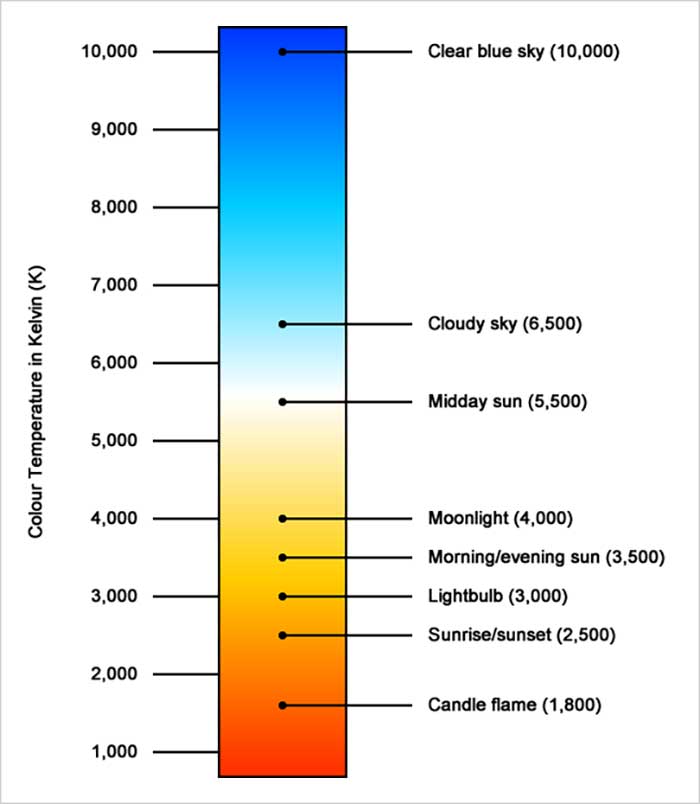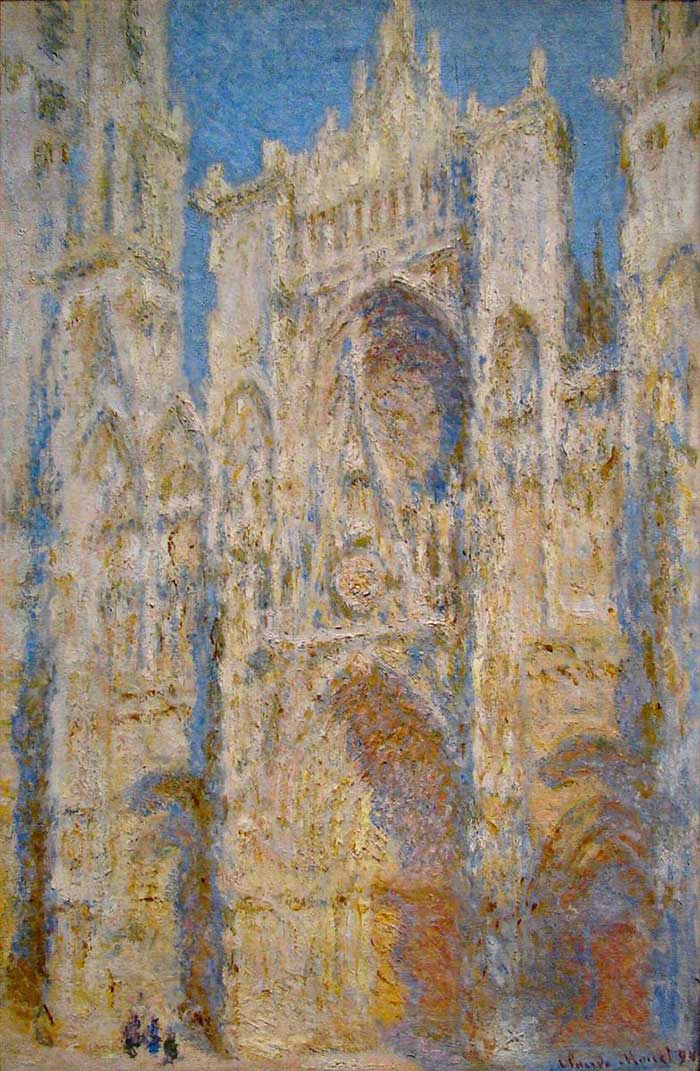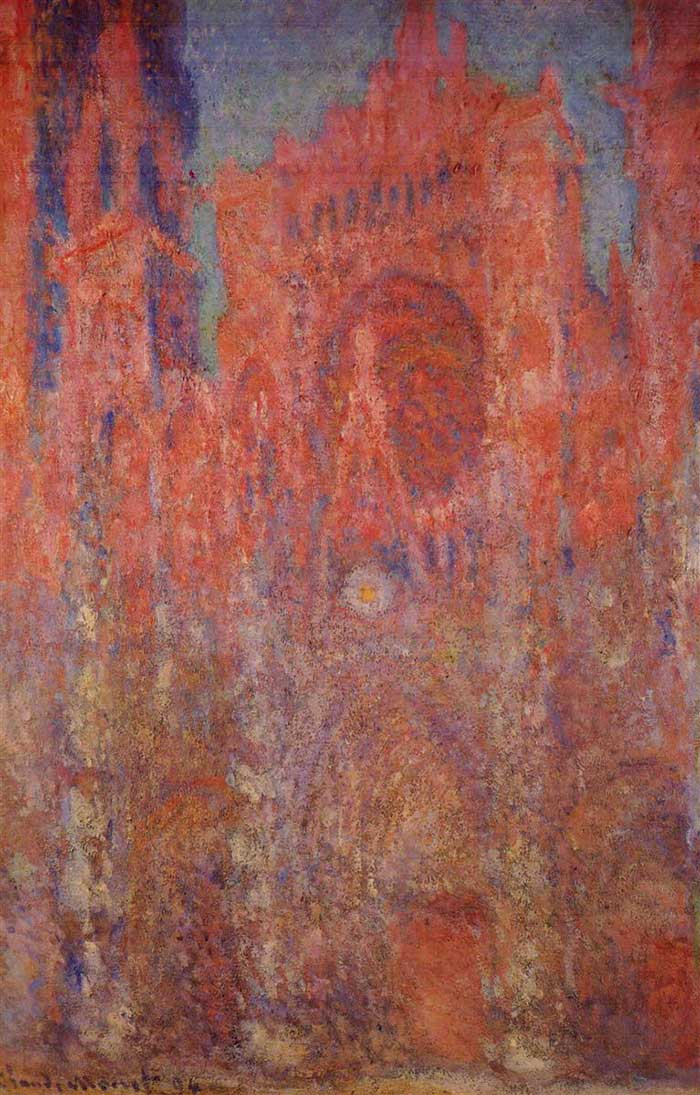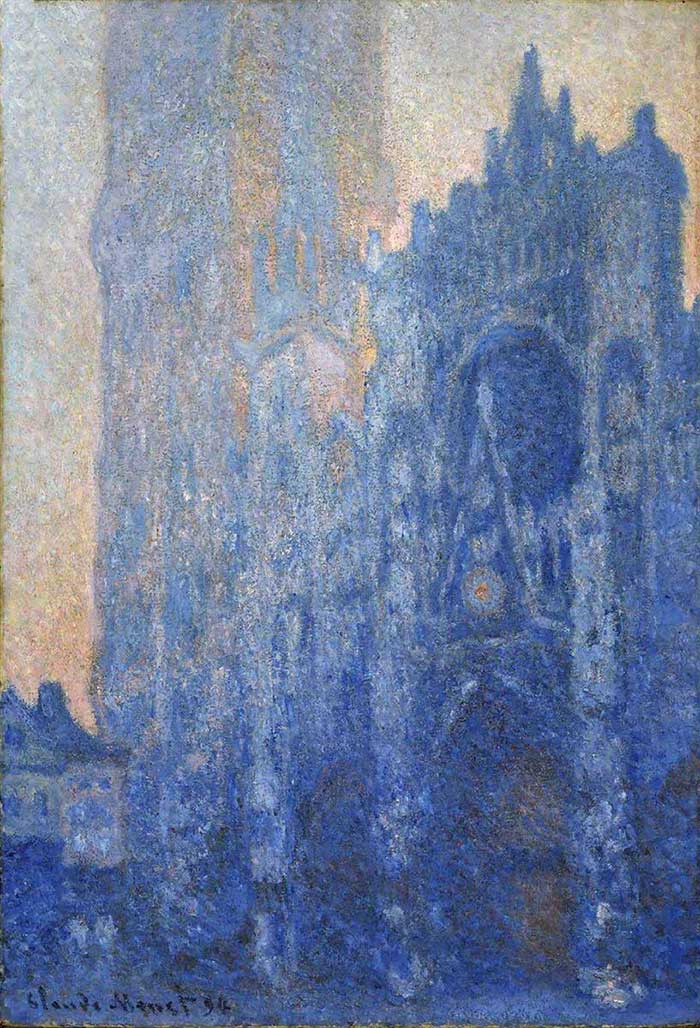Cool and Warm Color Drawings
This is Office 1 of a series of posts which will delve into the circuitous world of color and low-cal. The first concept I want to talk over is color temperature.
Color temperature generally refers to how "warm" or "cool" a color is. Just if only information technology were that simple.
Information technology seems every artist has a different interpretation of what colour temperature means in fine art. In this post I want to intermission downwardly color temperature and what it means for us artists.

What does color temperature mean in art?
Color temperature has a few meanings depending on your perspective.
In relation to our paints, colour temperature refers to our perception of a color as existence either warm or cool. Many artists like to carve up the color wheel into warm and cool colors, shown below:

So reds, oranges and yellows are generally considered to be warm colors, and blues and greens are mostly considered to be cool colors.
But it is of import to notation that the colour temperature of our paints is merely perceptual. Our paints do not take any intrinsic or fixed color temperature. We merely acquaintance certain colors as being either warm or cool based on the surrounding colors (more on this subsequently).
(If you want to acquire more about colour mixing and painting in general, I invite you to join my free email course, 7 Days to Improve Paintings).
Color temperature and psychology
Take you ever thought about why red is considered a warm color and blue is considered a absurd color? Especially given the fact that as an energy source gets hotter, it gets bluer. And as that energy source cools, it goes toyellowish to orange to red.
So from a physics perspective, our traditional use of warm and absurd to describe colors is actually backward. Simply nosotros are painters, not physicists, so this inconsistency does not trouble us.
The reason we perceive certain colors as being either warm or absurd has much more to do with psychology rather than physics. There are many psychological triggers which influence how nosotros perceive colors. We generally associate blueish with "cool" things such equally water, ice and a clear blue heaven. On the other hand, nosotros more often than not acquaintance red with "warm" things such as fire, blood or a dusk.
Colour temperature in relative terms
The trouble with splitting the colour wheel into warm and cool colors is that it implies color temperature is accented, that is, certain colors have fixed and unchangeable temperatures. So a crimson isalways warm and a bluish isever cool no matter what.
But this is a very narrow way of thinking and information technology leaves a number of questions unanswered, similar:
- If yous have two unlike reds for example, are they both the same temperature?
- What is the warmest colour and what is the coolest color, if any?
- Tin can a color accept no temperature?
Equally an creative person, I prefer to call up near color temperature in relative terms, rather than absolute terms. This is considering colors cannot exist by themselves. You tin simply place a color if you have another color to compare information technology to.
Saying that blueish is a cool colour is only non a helpful argument. Sure, when compared to carmine, it does appear to be a absurd color.
But what happens when you place that blue next to another blue? Are both dejection the same temperature, or is one cool and the other warm in relation to each other?
If we think of color temperature in relative terms, then the first blue is slightly warmer than the 2nd bluish, as the get-go blue is closer to cherry/orangish/yellow. Simply if we were to assign some kind of fixed temperature to colors (like many artists do) then you may just consider both blues to exist absurd.
When you outset to retrieve about colour temperature (and color in general) in relative terms, and so you will see a much wider range of possibilities for using color temperature in your paintings. Rather than only trying to dissimilarity a warm color similar red confronting a cool color like blueish, you lot will come across opportunities to create subtle temperature contrasts inside the blues and reds. That is, y'all could go from a warm blueish, to a cool blueish; or a warm red, to a cool red. This is how you can achieve these stunning color vibrations all throughout a painting. An creative person who comes to mind when I think of vibrating colors due to subtle temperature shifts is Steve Huston.
When most people call up of colour temperature, they call up of these sharp contrasts of orange against blue, or green against red. Merely color temperature dissimilarity could be as subtle every bit a slightly warm gray against a slightly absurd grey.
In practice, I am always asking myself....
"Is this colour warmer or libation than the color next to it?"
That is what color temperature comes down to for the states artists. One elementary question.
The color temperature of light
And so far in this post I take talked about color temperature as information technology relates to our paints. Simply, equally I discussed already, our paints do not accept any intrinsic colour temperature, only a perceived color temperature. Light on the other hand does have an intrinsic temperature.
Below is a color temperature range for light which is measured on the Kelvin calibration plus some interesting reference points:

Light over 5,000K is a bluish-white color and is considered absurd and low-cal which is nether five,000K has a yellowish-white to red color and is considered warm.
Why is the color temperature of calorie-free important? Because it influences everything we see!
If y'all paint under the warm calorie-free of a dusk, then the colors you see will exist vastly different to the colors yous would run across under the absurd calorie-free of an overcast solar day.
Claude Monet demonstrated this through his series of paintings on water lilies, haystacks and the Rouen Cathedral.




Same discipline, but vastly different colors due to the different color temperature of the light which illuminated the castle.
What color temperature means for u.s.a. artists
Our goal as artists is to tell a story about what we see using our paints. Part of this involves understanding what nosotros come across and then using the tools at our disposal to create some kind of faithful representation of that.
In terms of color temperature, we cannot replicate the bodily temperature of light. Just, we tin use our paints to give the illusion of the light. At that place are two parts to this:
- Figuring out what the color temperature of the light is; and
- Using our paints to create the illusion of this light.
And so if the lite which illuminates our subject is the warm orange light of a sunset, then yous demand to select your colors to mimic how the low-cal works. In the painting below, the yellows and reds appear warm in the context of the rest of the painting. This creates the illusion of the warm light of the dusk. Just, if I were to environment those yellows and reds with more vibrant yellows and reds, then there would exist no illusion of warm light in the distance.

Dan Scott, Earlier the Sun Goes Downwards, Fraser Island, 2017
(You might also exist interested in my Painting University form. It will assistance y'all sympathize and utilize color more effectively in painting.)
Summary
Hither is a recap of what we have discussed:
- Our paints do not have an intrinsic or stock-still color temperature. Blue is nonalways a cool color and red is note'er a warm color.
- The colour temperature of our paints isrelative. That is, the temperature of a color is purely based on what yous environs that color with.
- Litedoes have an intrinsic temperature which is measured on the Kelvin scale.
- The colour temperature of light is one of the most determining factors to the colors which you run into. The colors you run into under a warm light will be vastly different to the colors yous see under a cool lite.
- It is important to empathise the distinction between the color temperature of our paints (which is perceptual) and the color temperature of light (which is intrinsic). They are actually 1 in the same, as without low-cal there is no colour. But understanding the distinction will also help you understand the limitations of our paints (refer to the indicate below).
- We are not able to replicate the appearance, including temperature, of light. But what we can exercise is apply our paints to create the illusion of light.
- The better your understanding of light, the ameliorate you will be at creating the illusion of that low-cal.
In the side by side role of this serial I volition get into more detail about how you can paint under different light sources.
Source: https://drawpaintacademy.com/what-is-color-temperature/
0 Response to "Cool and Warm Color Drawings"
Post a Comment